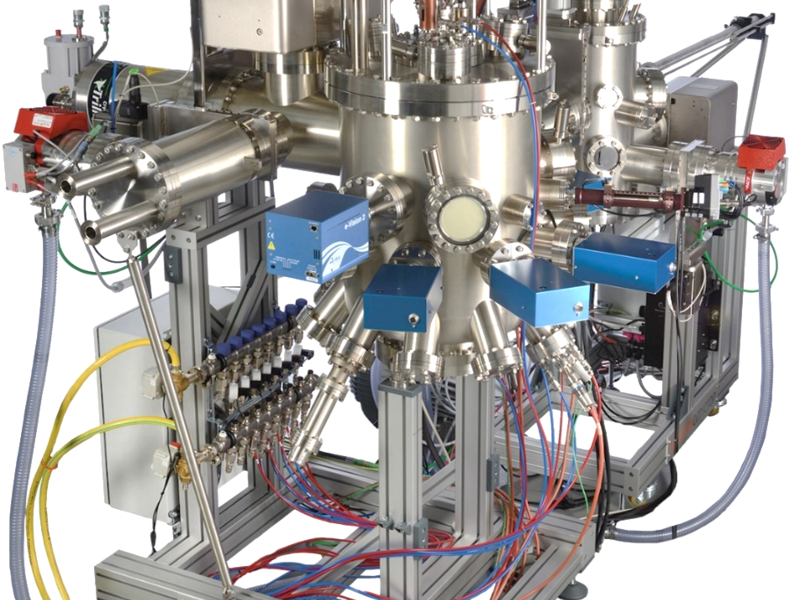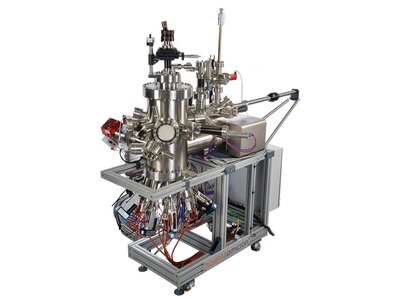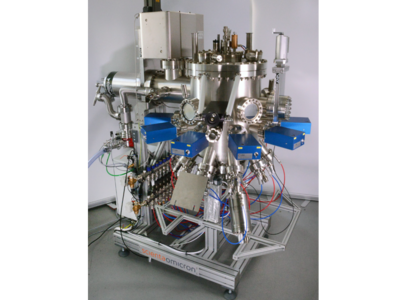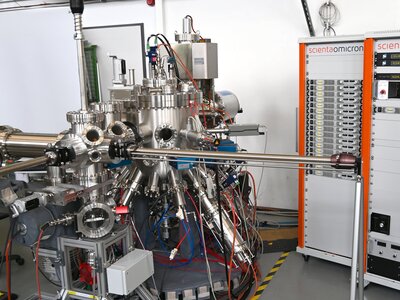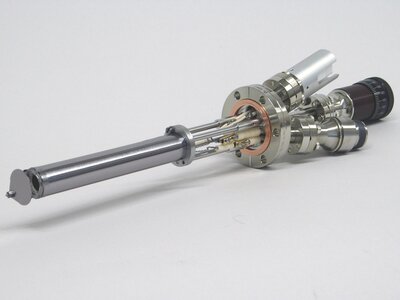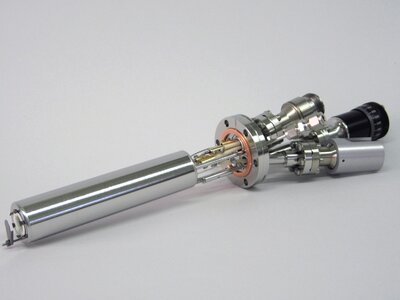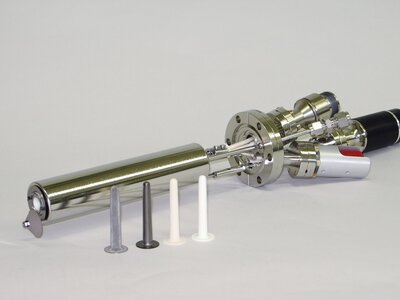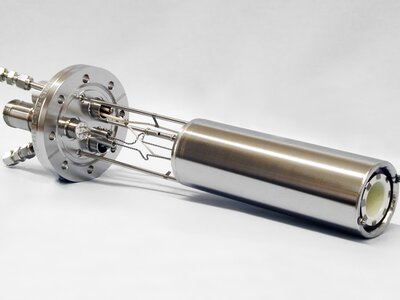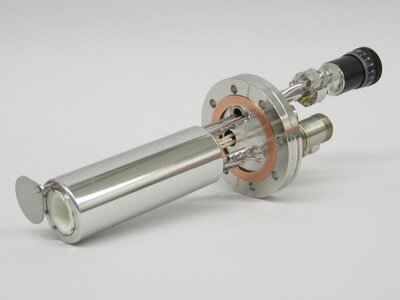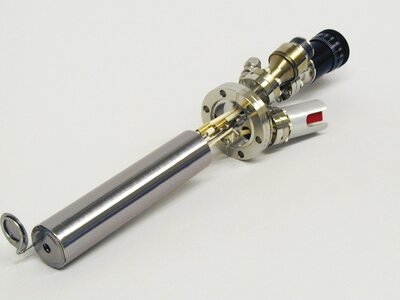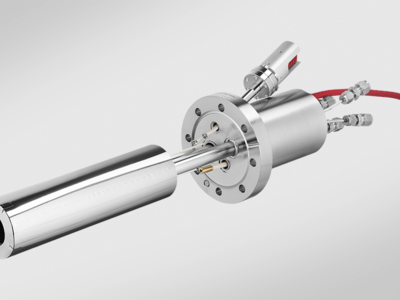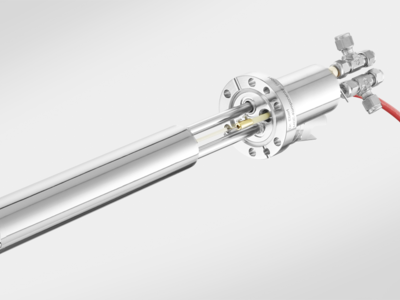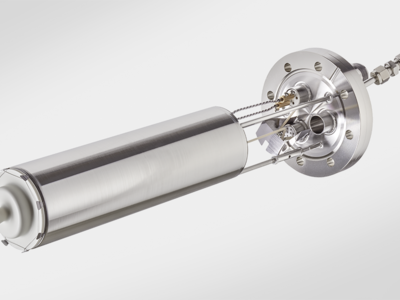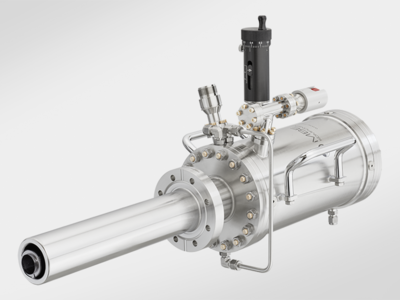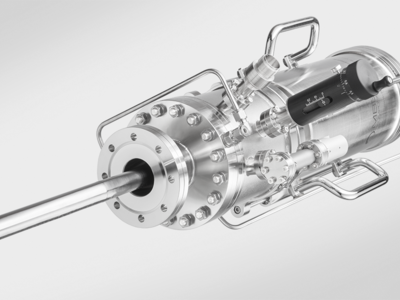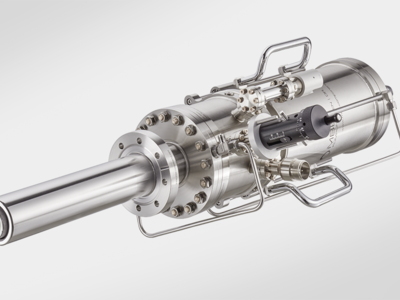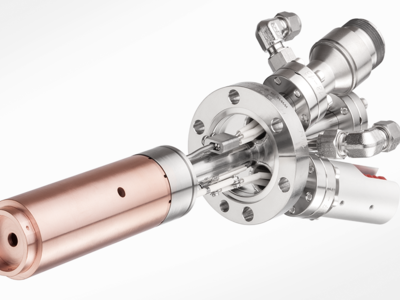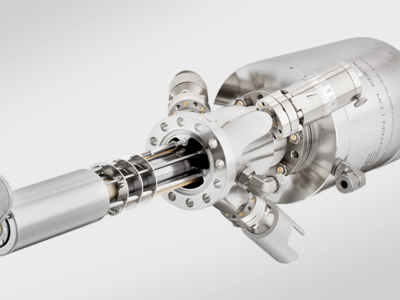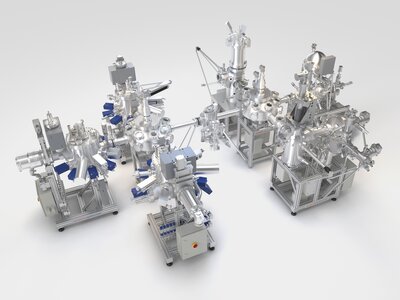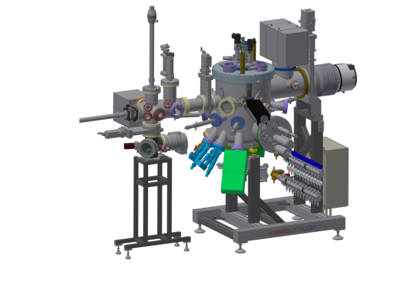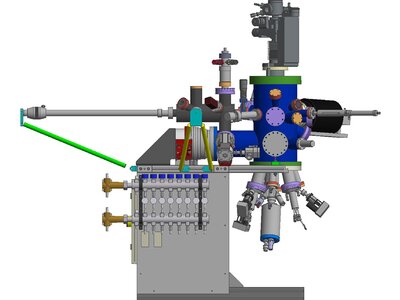Molecular Beam Epitaxy (MBE)
Molecular Beam Epitaxy (MBE) is a popular deposition technique by which epitaxial, layered structures are grown under ultrahigh vacuum conditions on a (crystalline) substrate material. The films are grown by a chemical reaction of at least one molecular beam impinging on the surface; in the simplest case, this chemical reaction is the material transition from the gas phase in the molecular beam to the solid state on top of the substrate. The molecular beams are created from effusion cells, which can be typically found at the bottom of the corresponding UHV vessels. The substrate material, at which the molecular beams are aimed, is usually oriented “face down” and can be subject to further in-situ treatment like heating or rotation during deposition. Thereby, higher qualities of the deposited films can be achieved. Oftentimes, the quality of the grown films is checked in-situ which typical UHV methods, one of the most established in this context is Reflection High Energy Electron Diffraction (RHEED).

